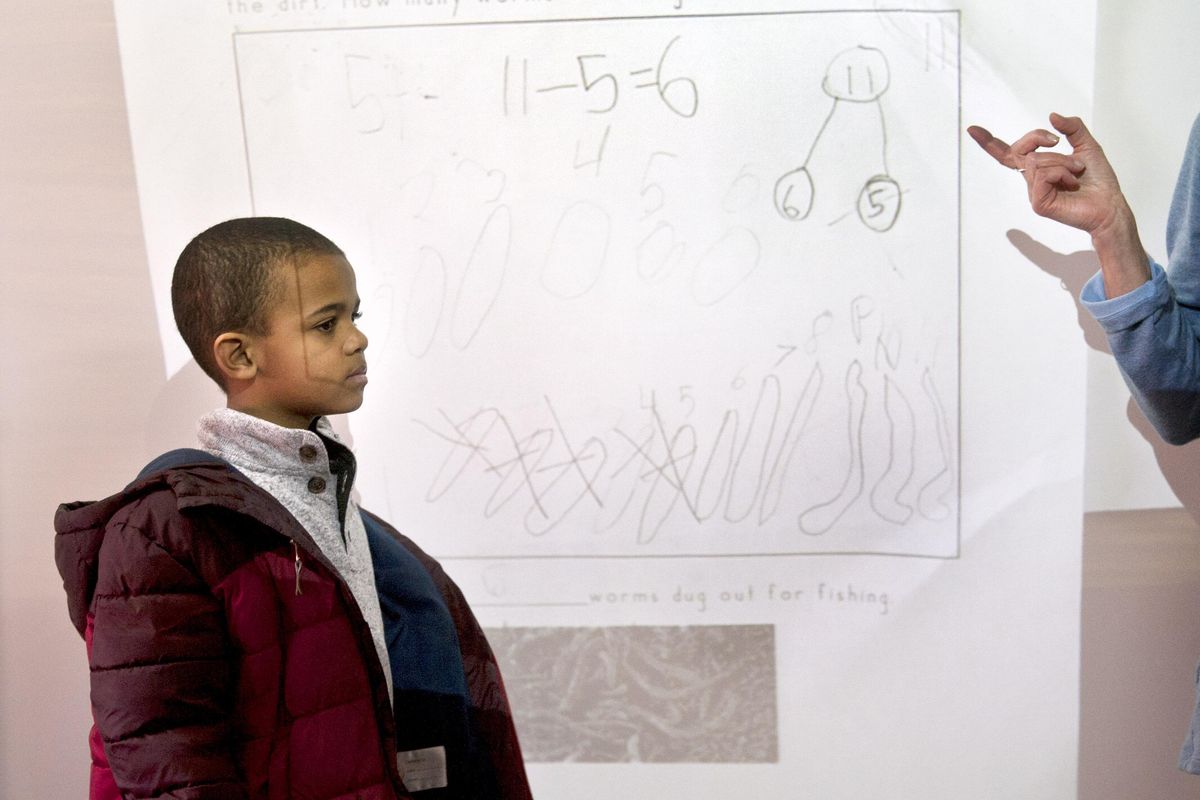Visual learning catching on in Spokane schools

In Marion Bageant’s classroom at Garfield Elementary School, first-graders tackled the slippery subject of subtraction last week with a pile of worms.
The worms existed only on paper, but the students brought them to life thanks to Bageant’s embrace of visual thinking strategies, where every picture is worth a thousand thoughts.
Those thoughts took shape in the hands of 20 students, who drew worms of all shapes and sizes as they digested a story problem:
“There were 11 worms in the dirt. Nijah dug out some worms to use for fishing. Then there were five worms in the dirt. How many worms were dug out?”
Through it all, Bageant focused on the journey.
What followed was a revelation for her students, whose worms were represented as blobs, zigzags, straight lines and curves. They were counted in lines and on number trees.
What mattered was the process in finding the “unknown number” through the visual process and then discussing the problem and the solution.
“The best thing is that it builds a unique classroom like nothing I’ve ever seen before,” said Karin Thompson, who coordinates language arts, social studies and kindergarten at Spokane Public Schools.
“It has opened doors to learning for kids who often don’t want to share, and that’s what’s opened the eyes of teachers,” Thompson said.
What began as a method to stimulate teacher-student discussion of art images, visual thinking strategies (VTS) is widely documented as having positive effects on teachers and students.
It was created by cognitive psychologist Abigail House and museum educator Philip Yenawine, who in a 2013 book define VTS as the use of art to teach “visual literacy, thinking, and communication skills.”
VTS is used in museums, schools, universities and health institutions around the world.
Museums have made a significant contribution to teaching VTS. In Spokane, the MAC offers a two-day practicum, “Developing Powerful 21st-Century Skills Through Art.”
“They have been a cornerstone for our work,” Thompson said.
The scientific basis, according to experts, is that visual information is processed more quickly than text. Also, students write more, and at a higher level, as a result of discussions using visual thinking strategies.
Most of the lessons incorporate art images and photographs. Students are encouraged to make three key inquiries: What’s going on in this picture? What do you see that makes you say that? What more can we find?
The result, according to Bageant, is an environment “that allows kids to share their thinking with each other.”
Introduced as an opt-in program in Spokane about 10 years ago, VTS has gained traction throughout the district and beyond.
Smaller schools have adopted VTS. At tiny Great Northern School, located northwest of Spokane, teacher Eileen Nave opens with a simple question: “What’s going on here?”
Nave stresses reasoning rather than rote learning. Reaching the right answer is less important than explaining the thought process.
Though not all teachers have bought in, about 200 have been trained in Spokane Public Schools.
“It’s gaining momentum,” Thompson said.
Bageant can feel that momentum in her class at Garfield. Acknowledging that she was “raising the bar” with the worm problem, she was eager to see how it was received.
“There are some kids who will get this and some that won’t,” Bageant said. “They also need to struggle a bit, and feel comfortable with the struggle.”
At 10 a.m., her students returned to class, just as eager to begin the lesson.
Students were paired into what Bageant called “collaborative partners,” a term that they clearly understood.
After 10 minutes of highly-focused drawing, some were called to show their work. The right answer – which was “six,” one boy blurted out – was less important than the process.
Patiently, Bageant asked soft-spoken Courtney Vaughn to explain his work. Then she asked his classmates for an appraisal.
“What do you appreciate about Courtney’s work here?” she asked.
To Bageant’s delight, Courtney’s classmates chimed in with praise and questions.
“Kids are excited about this,” Bageant said.